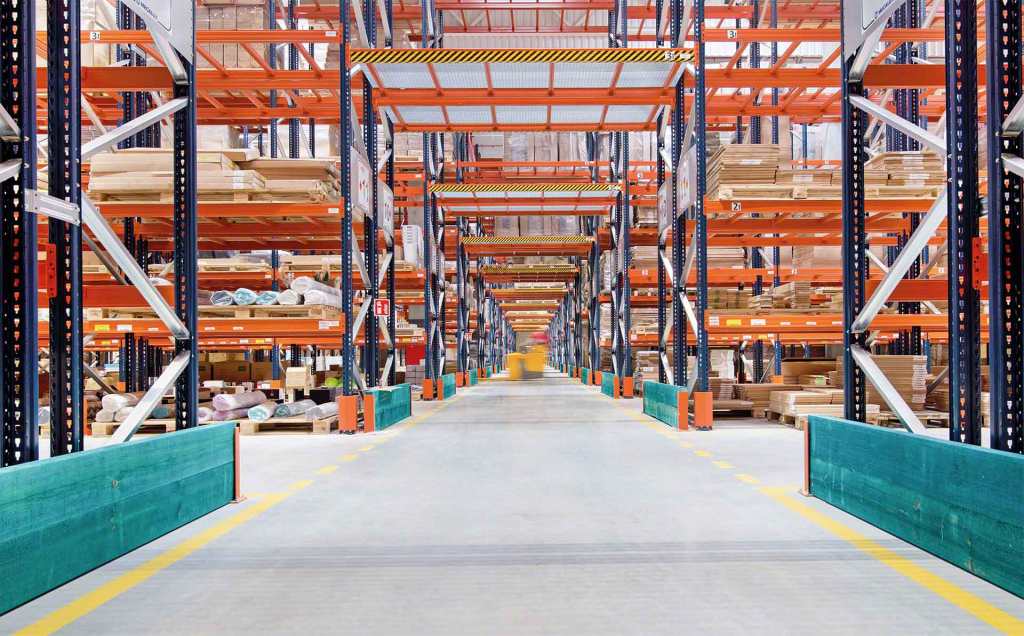Throughout the supply chain, small mismatches and variations in demand forecasts with respect to actual demand create a snowball effect that starts out small but, if not attended to and regulated, as time goes on, the mismatch is transmitted from link to link throughout the chain, growing and eventually becoming a real inventory problem called: stock outs or overstocking.
When managing inventories, it is very important to foresee that this situation will arise one day in the company. For example, setting a minimum stock or safety stock for the items being sold. This planning is the responsibility of the manager or director of the supply chain.
Stock break is the situation that occurs when a customer wants to buy a certain product and the company does not have enough stock to serve it. In other words, it is the unsatisfied demand of the customer caused by the lack of stock of a certain product.

The dissatisfaction of the customer for not receiving his order due to the lack of units (breakage of stock), is not a problem that affects only the customer: the production chain, the warehouse, the purchasing department, the commercial forecast and of course the external customer can be easily affected by this evil that in some companies is even accepted with resignation as an inevitable modus operandi. WIP’s (work-in-progress) out of stock, production halts, panic orders, process delays, wastage in the warehouse and throughout the supply chain, loss of confidence, are some of the most immediate and often unexpected effects of a break in stock.
Among the risks to which companies would be exposed by not properly managing their inventory and produce breakage of stock are:
- No planning of suppliers: the lack of information and control of their lead time causes us to order goods without any planning, that is, without a calendar and without taking into account the times of our suppliers, their reliability, their delivery schedules, the articles they supply from stock or to order, etc. Without supply planning, the pace of our needs will be out of balance with the pace of acquisition, which will end up causing stock breaks at one or more points in the chain.
- Predicting variations in demand that are deficient or non-existent: a reactive warehouse is not preventive, therefore, it is doomed to assume the consequences of the lack of anticipation actions that prevent breakdowns.
- Unexpected increase in demand: a clear example of this is the case of an article that unexpectedly becomes fashionable and whose demand far exceeds its availability in stock and the manufacturer’s production capacity.
- Incorrect inventory data: stock is broken by bad information when you are confident that certain units are inventoried and there are actually fewer or no units left.
- Unforeseen supply delays: due to transport incidents, manufacturing or quality failures, etc. When they occur in the case of raw materials or components, they can stop production or force urgent replanning.
- Not knowing our own lead time, our stock levels, our production capacity, etc.: selling what we do not have available or compromising impossible deadlines due to not knowing our lead time causes identical effects as breaking stock.
- Not locating stock in the warehouse even when it is in stock and available: this is a mistake that causes countless breakages in warehouses where the technology is not used properly or does not exist.

To avoid breakage of stock unavailability of these we can:
Optimal lot: it is the adequate and necessary quantity for the cost of an order to be convenient. If the supplier charges a fixed amount of 100 euros to serve each order, it is logical to place orders with the largest possible volume of products. In addition, storage costs must be taken into account.
Optimal ordering point: This section refers to the time in which the order is placed with the supplier. Here we must take into account the time it takes to serve us and the daily units we sell of the product.
Safety stock: or also called . These minimum units that are established for a product serve to cover an unexpected demand. For example, an unexpected influx of people to our digital or physical store for a marketing campaign.
Better coordination between departments: the lack of communication between different areas of the company is key.
Control the current life cycle of each product: Knowing the point at which each of our references is, market introduction, growth, maturity or decline, will allow us to objectively evaluate the stock levels that we must maintain so that they do not fall to excessively low levels in times when demand for them is predictable based on the moment in their life cycle.
Forecast of the demand with adequate margins of error: If we are distributors it is very important for the correct management of purchases and sales and if we are manufacturers it will be determinant
for planning the production.
Supplier planning: In order to avoid stock-outs it is essential that we work in the right direction: improving our relationships with suppliers, thus enhancing their ability to supply our company. Company and supplier do not have to act as a tandem, they are inevitably in the same tandem and therefore must join forces to establish a productive relationship that benefits both directly and indirectly to the final customer.


Steph your article is really interesting and complete. The break in stock is a common unhealthy practice in a lot of enterprises. In the company I used to work we normally have problems of shortage because the demand was higher than the production capacity of the plant, but the managers didn´t want us to reject orders, which generate a lot of problems and fights with distributors, dealers and final clients. Also, is important to mentioned that a manufacturing company can have a stop in the production line due to shortages there are some companies that work with just in time policy in order to minimize inventories. There was a case in Mexico of GM which use a just in time policy, that has to stop production for 2 hours due to a delay of one supplier, that costs the company a lot of money that the supplier had to absorve.
In the case, someone want to learn more about just in time, the smartest production system in the world,in which try to work only when the things they need in that moment, reducing inventory levels and avoiding errors. You can see this brief video.
Emily, thank you very much for complementing this article with your comment, since it will surely be useful to our classmates. As you mentioned, the lack of response with the client is often difficult to correct, bringing with it very unfavorable results for the company; I consider that if a company allows this to happen, it will always have consequences that will directly impact the costs of urgent shipments, generating extra costs to compensate for the lack of what was not sent within the agreed time (this is very common in B2B transactions), and in the worst case it can cause more serious consequences such as the loss of confidence in the brand image with a direct impact on the deterioration of the company’s value proposal.